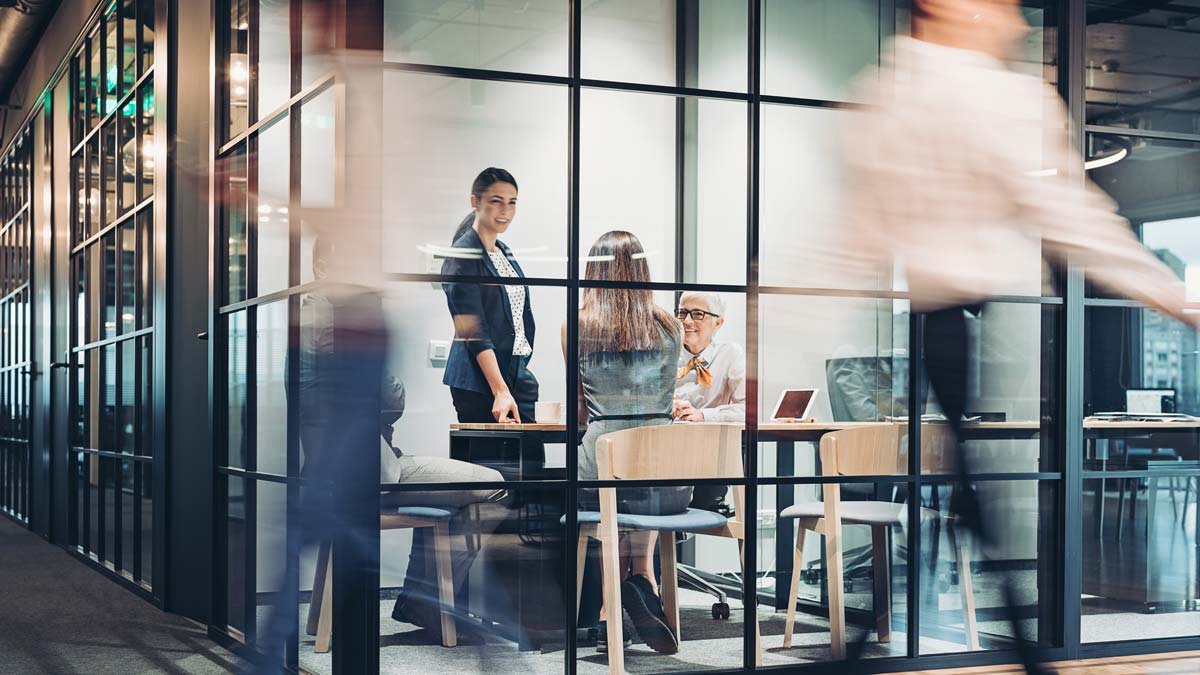The concept of the office is less recent than we think. Clinical work was done in grand halls and courtyards as early as the 1700s. Even earlier in history, Renaissance-era scriptoriums depict work in pod-like stations. We have seen the office structure change over time, and it is no surprise that the modern office has changed in the past three years post-Covid. As contemporary employees and companies adjust to the “new normal,” what office design trends can we expect to emerge?
Trend 1: Flexibility
The office trends in the past 60 years have evolved, with the cubicle being the driver shaping the typical office structure. What we know today as the cubicle was introduced in the 1960s as the Action Office by Robert Propst. The intent was to react to the open office, industrial style of working that was present at the time, aiming to provide freedom and personal storage. With each shift of the decade, we saw the workstation evolve and impact the trends of the work style.
The 1970s continued the industrial, open office environment of the 1960s. The 1980s introduced flexibility through a hierarchical approach, introducing private offices for senior staff and solidifying cubicles as the building block for office layouts as computers, equipment, and personal storage needs emerged.
The 1990s focused on flexibility as the rise in technology created more freedom than in the past decades, and we began to see more modular furniture. The 2000s introduced wellness and biophilia in the workplace. As technology became more advanced and compact, typical desk sizes decreased. The 2010s emphasized the overall office experience as a driving force for attracting employees, using amenities such as gyms and cafes and the reintroduction of the open office.
Fast forward to the 2020s, we continue to build on these trends, emphasizing natural lighting and work zone variety within the space. Working from home has highlighted the need to create balance and flexibility in the office environment. An emphasis on the workstation introduced creative solutions that address privacy, focus, and collaborative needs. We will continue to see flexible furniture solutions, including multipurpose moveable and reconfigured desk types rather than furniture that is set and fixed to one location.
Trend 2: Wellness
Emerging from the pandemic brought about a rise in prioritizing mental well-being in personal time and in the office environment. The lockdowns during the pandemic enforced a sudden confinement that many had not experienced before. Research from the National Institutes of Health reported that rates of anxiety and depression had increased since the beginning of the pandemic. As a result, wellness rooms and natural lighting are becoming more popular as a necessity in office design, not just an amenity.
Trend 3: Rise in Technology
If there is one thing we can expect to advance continually, it is technology. As societal needs change, technology is one step ahead, growing as a tool to rely on. The pandemic changed the way we connect, and technology became the sole medium for communication, where face-to-face interaction and access to physical resources were once common options.
Though the technology for remote connectivity was already in place, the pandemic shed light on the various needs for technology to supplement other aspects of our pre-pandemic lifestyle. As a result, digital transformation has accelerated to meet the demands of a world that still needs to function despite the unprecedented times.
How will this play out in the workplace? With many realizing that work can be accomplished globally on a remote schedule, more applications to support remote work will be developed, with artificial intelligence and machine-based productivity being unavoidable tools. We will see technology continue to merge into our systems, no longer an ancillary tool. Furniture solutions that integrate technology for video conferencing and collaboration will be developed and will reshape the way we use furniture.
Only time will tell how societal changes have shaped this period, but we can expect that natural lighting, variety, and technology will be seen throughout the shift.



